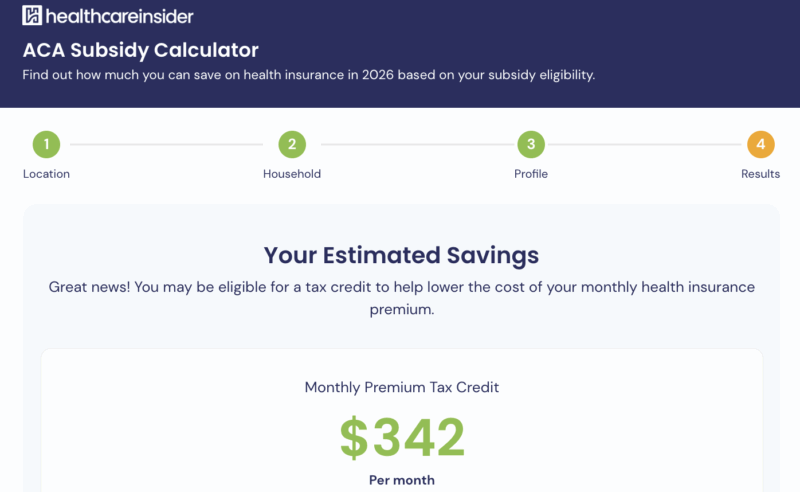Written by Jenifer Dorsey
HealthCare Writer

Reviewed by Jeff Kritzer
We want to help you make educated healthcare decisions. While this post may have links to lead generation forms, this won’t influence our writing. We adhere to strict editorial standards to provide the most accurate and unbiased information.
Key Highlights
- Unexpected medical bills can be high, especially if emergency care is out-of-network; proactive insurance checks can help minimize costs.
- The ACA covers emergency services regardless of network status, but balance billing can still lead to significant out-of-pocket expenses.
- To avoid costly bills, know your network, plan ahead, and check with insurance companies and providers for billing details.
For many Americans, getting medical bills is stressful. Unexpected medical bills only add to the angst. Though a growing number of people do their best to avoid amassing these expenses – seeking preventive care, living a healthy lifestyle and setting aside money when possible – sometimes they are unavoidable. Medical emergencies happen. There are nearly 146 million emergency department visits in the United States each year.
At times, that emergency care triggers astronomical bills because the hospital was considered out-of-network by the patient’s insurance company. For example, Megan Rothbauer, a 29-year-old Wisconsin woman, is facing bankruptcy due to expensive out-of-network care she received when she went into cardiac arrest. A New York Daily News article cited balance billing as a cause for her more than $250,000 in hospital bills.
“Such circumstances are rare,” said Dr. April Seifert, Data Innovation Lead of HealthCare.com, “but when it does happen, it’s very costly.”
These shockingly high medical bills may happen for several reasons. One is when patients are unable to tell EMT’s where to take them, they are typically transported to the nearest hospital. In some states, ambulance drivers are required to go to the closest hospital. There is also the problem of limited access to network hospitals in many areas, especially in rural settings.
To help avoid such situations, consumers should check their health insurance benefits while they’re healthy to find out how to minimize out-of-network emergency costs.
Emergency Services and The ACA
Emergency care is covered under the Affordable Care Act (ACA). It is one of the 10 essential health benefits that ACA-compliant insurance plans must include. Though specific benefits within this category vary from state to state, the following is required for all qualified health plans:
- Coverage for emergency services will be provided without pre-authorization required
- Emergency services are not limited to in-network providers
- When emergency care is received by out-of-network providers, the cost-sharing requirement (copayment and coinsurance rate) must match in-network rates
Check with your health insurance company for specifics on out-of-network emergency care, but there should be few times when you will be responsible for out-of-network costs.
“Emergency services are emergency services,” said Jeff Smedsrud, HealthCare.com CEO. “These are covered. What might happen, though, is that something is not considered an emergency.”
So, if emergency services cannot be limited to in-network providers and out-of-network providers are limited to charging the same amount, how can some bills be substantially larger?
Balance Billing
When a service is not considered an emergency, out-of-network providers are allowed to do something called balance billing. These providers bill patients for the difference between what they charge and what the insurance company pays. By contrast, in-network providers agree to accept the amount the insurance plan considers reasonable and customary and are not allowed to bill the patients for the difference.
An Example of Balance Billing
You incur $15,000 in hospital bills. You have already met your annual deductible and must pay 30 percent coinsurance, as outlined in your policy—that’s $4,500. However, your insurance company will only pay $5,000 because that is what such services would be billed in-network. You now owe an additional $5,500 for a total of $10,000.
Balance billing can be a real concern, especially for those who get their health insurance from the state-based or federal health insurance exchanges. These plans tend to have narrower networks, which can significantly limit which healthcare providers and hospitals insured members may visit to receive in-network care.
State laws on balance billing vary, and some prohibit the practice. A Kaiser Family Foundation study on surprise medical bills provides a list of states that restrict balance billing.
A team of licensed insurance agents are here to help you compare plans
Plan for the Worst
As the saying goes, hope for the best and plan for the worst. Know your network and be prepared for emergencies. Hopefully, you’ll be able to tell emergency personnel your preferences, but because of state law you may be transported to the nearest hospital.
“The fear is that during an emergency the person will be unconscious or unable to speak and indicate where they would like to receive their care,” Seifert said. “That’s not always the case, but a little pre-planning can help.”
She recommends that after you sign up for your health insurance plan, your next step should be to locate an in-network emergency room and urgent care facility and select a primary care doctor. Verify with your health insurance company that they are in-network. Remember to check that the doctors who practice at the facility are in-network.
Write this information down where it is easily accessible—in a planner, on your phone, on a piece of paper stuck to the fridge – and make sure those you live with know this information. If you are unable to direct where you are taken, these individuals may be able to do so.
Physicians and medical facilities often join or drop off different insurance plans through the year, so check in with your health insurance plan periodically and make sure your primary care physician and preferred hospital are still in-network.
“Networks change without people’s knowledge midway through the policy year,” Smedsrud said. “Insurance companies say ‘you should have checked the network.’ Provider networks change. There is no guarantee that certain providers will stay in that network year-round.”
He also cautions, “There are sometimes discrepancies between what is published about who is in a provider network and who is actually in that network on the day somebody uses services.” As such, consumers who checked the network and are later told they received out-of-network care should be able to make a pretty compelling argument with their insurance company.
Know How to React
If you do receive out-of-network emergency care, be proactive. Start discussing options with your insurance company as well as provider billing departments.
“People should find out in advance, if they can, what their bill might be. Let [the provider] know they have insurance,” Smedsrud said.
He recommends consumers also use online tools such as HealthcareBluebook to get a sense of what costs might be. “Find out if there are ways to prepay and get a reduced fee. There is a surprising amount of negotiation that goes on.”
As for the situation mentioned earlier, CBS News later reported that Rothbauer was able to work with her insurance company and the hospital to reduce the total out-of-pocket amount owed.
Unfortunately, medical bills of any sort can create a financial strain for many Americans. From 2015 to 2017, two out of five struggled to pay medical bills, according to a Journal of Internal Medicine study. More distressing, from 2013 to 2016, nearly two-thirds of bankruptcies were related to medical issues, according to a study by the American Journal of Public Health.
When shopping for a health insurance plan, pay attention to out-of-network benefits for emergency and non-emergency care. Carefully consider plan networks and which providers and hospitals are near where you live and work. Would another plan offer more options? Where else can you go in case of an emergency? The answers to these questions may influence your decision.
Thank you for your feedback!







